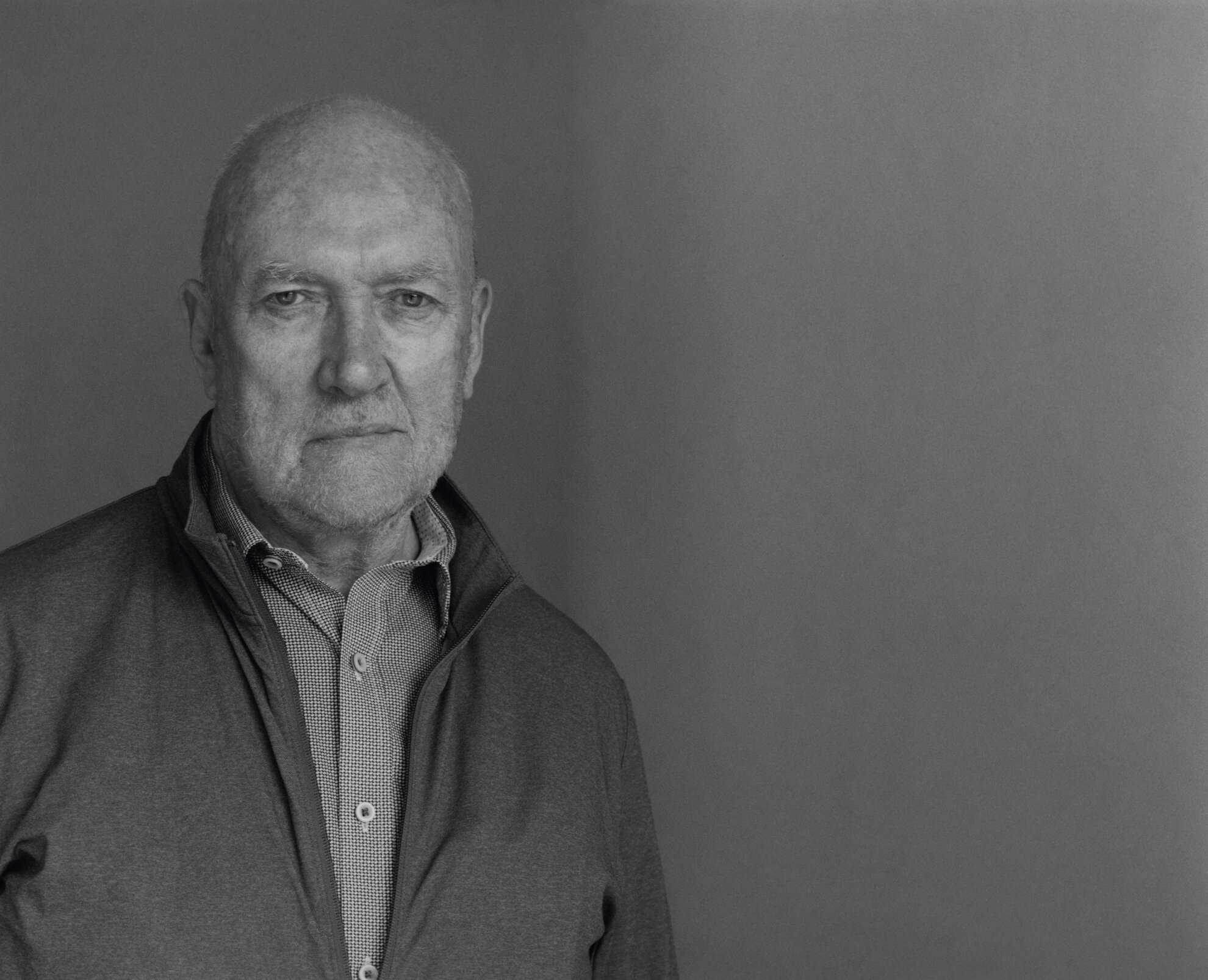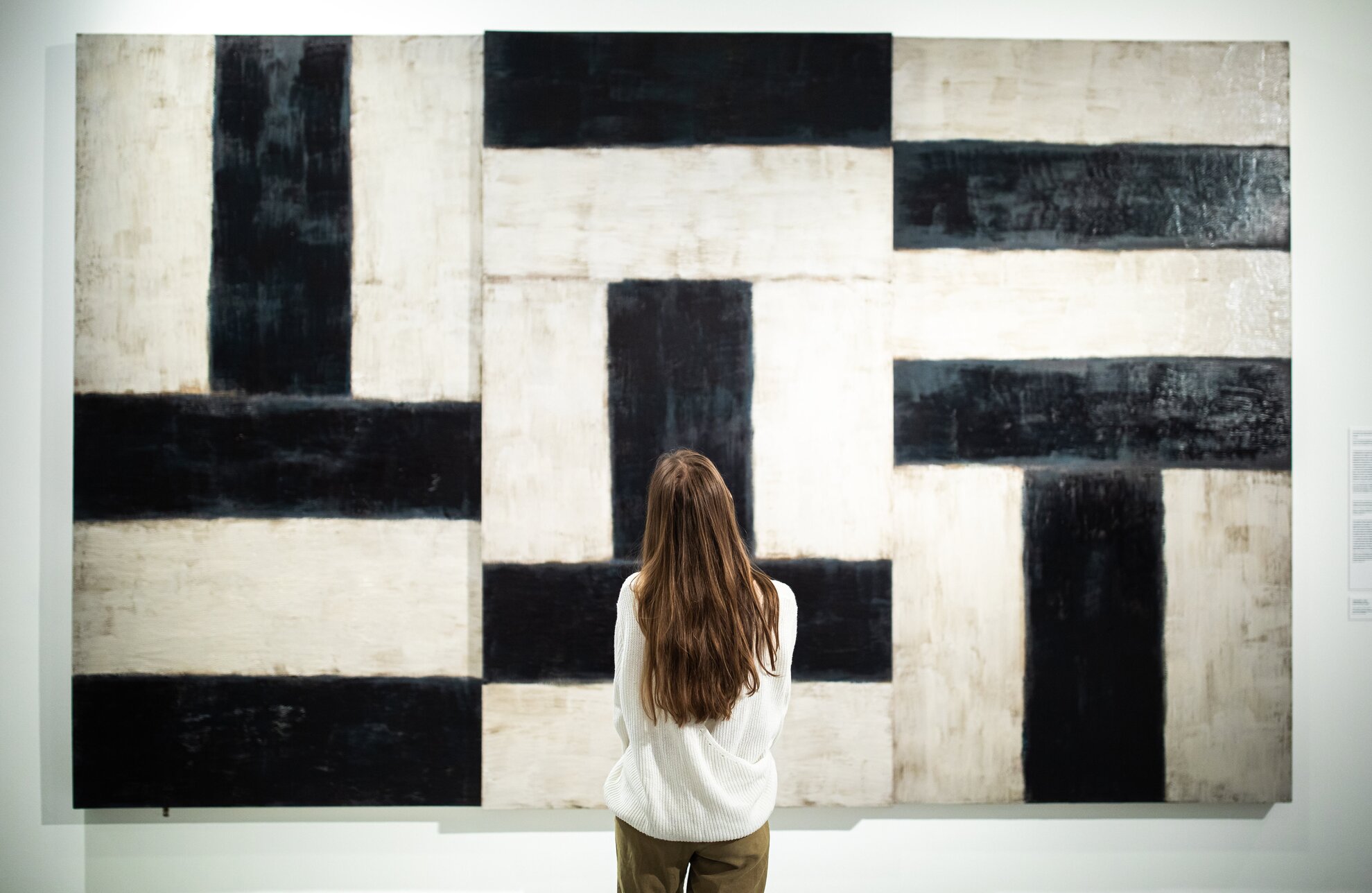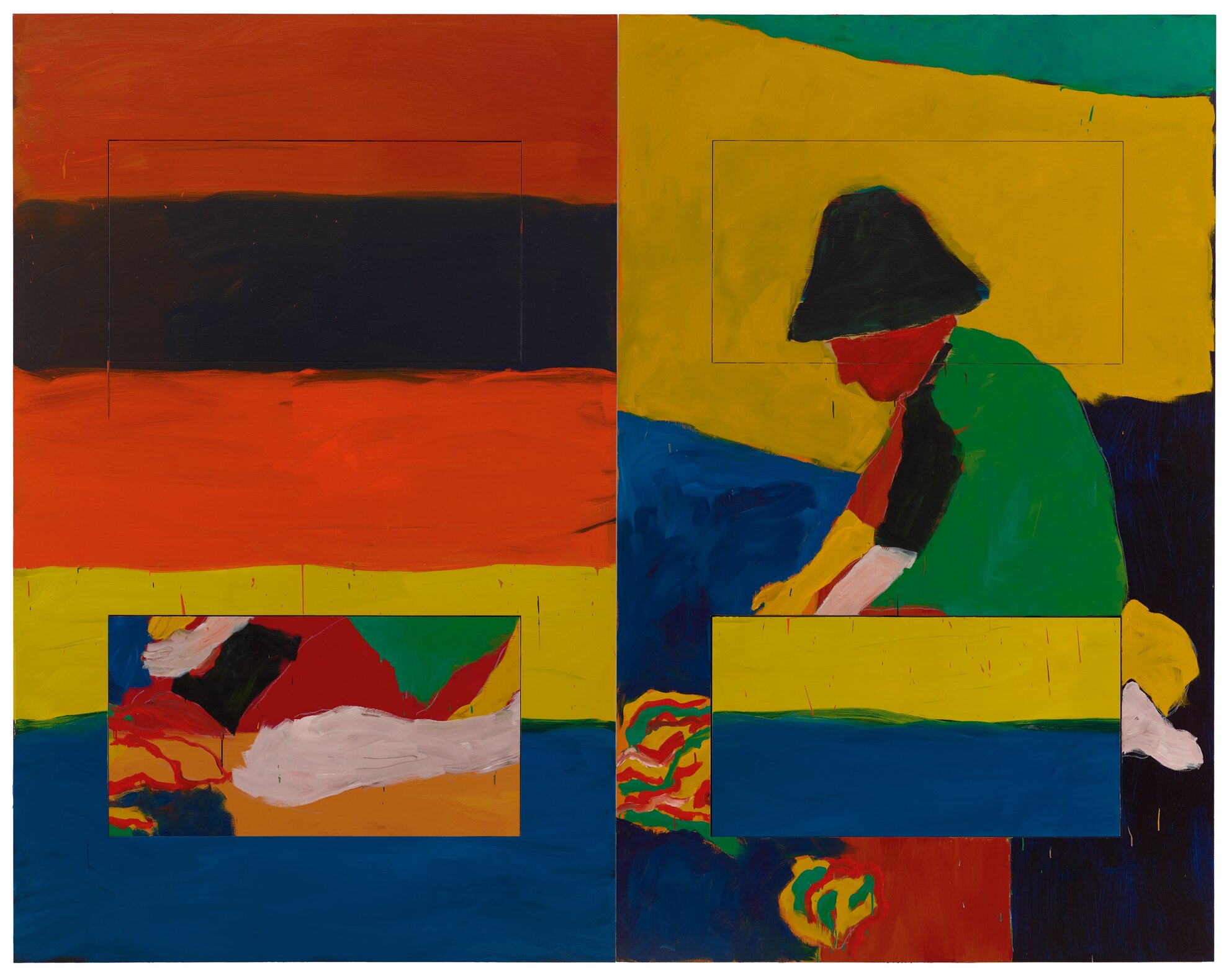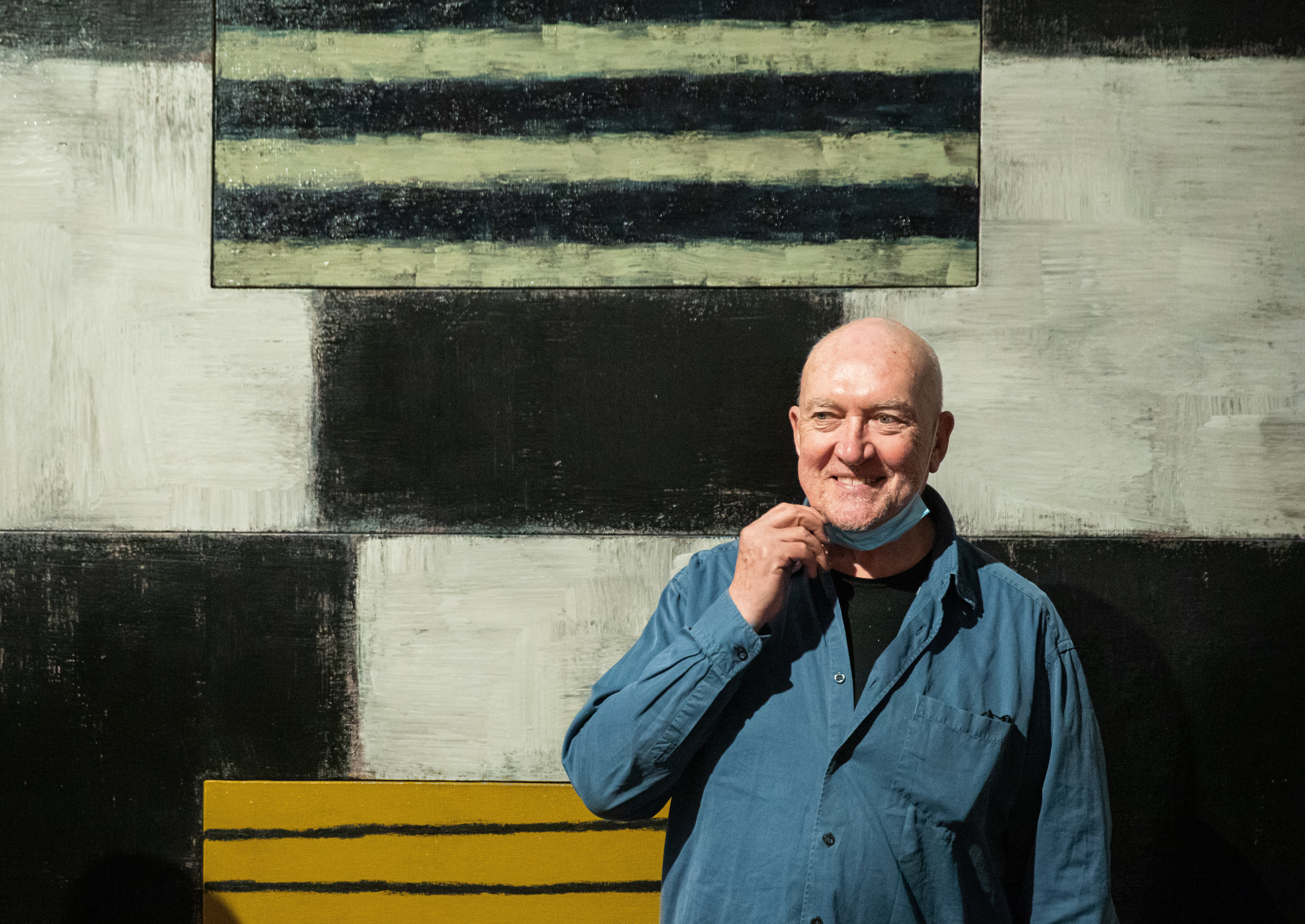Irish-born Sean Scully, who lives and works in America, is one of the
greatest living figures in abstract painting, a star of the international art
scene.
Born into a poor Dublin family in 1945, he was taken to London at the
age of four. He studied at Croydon College of Art and Newcastle University, and
later turned up at Harvard on a scholarship.

In 1975, at the age of 30, he moved from London to New York, where he gained world fame. He still returns to Europe from time to time, particularly London, and he also has a personal connection to Hungary: his wife, Swiss artist Liliane Tomasko, is of Hungarian descent, and her mother still lives at Lake Balaton today.

The influences of Van Gogh, Matisse and Rothko often chime in connection with Scully. At the beginning of his career, in the 1960s, he painted his own figurative works, while in the 1970s, he switched to a minimalist formal language, urban forms and discourses about the end of painting also influencing his art based on strip structures.

His art is also determined by his personal losses and experiences: in 1983, his 19-year-old son died in a car accident, the subject of one of his pictures at this Budapest exhibition.
This video was made by the artist himself at the exhibition in October 2020.
From room to room, intense, heavy colours and robust sizes and shapes
weigh on the viewer, emitting an emotional charge with pulsating energies and
encouraging free associations.
You can follow Scully’s important periods, from
groups of works that can be associated with window and wall motifs, to his
specific interpretations of the landscape.

This goes all the way to the last room, when you see figurative pictures once more: the same theme returns in each of them, a little boy is playing in the sand on the beach with his mother. His son, Oisin, was born in 2009, and inspired these dazzling, vibrant, figurative images created in 2018 – in parallel with his abstract works.
At the opening of the exhibition in October, Scully also presented his latest painting: Black Square, a tribute to Black Square by Malevich, whom he adores. This is a kind of window into nothingness, a metaphor for existential emptiness, which he explained was made during quarantine.
Sean Scully: Passenger – A Retrospective
Hungarian National Gallery
Building A
District I. Szent György tér 2
Opening information to be announced soon




